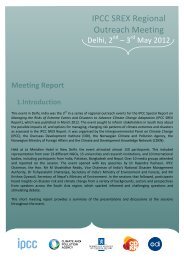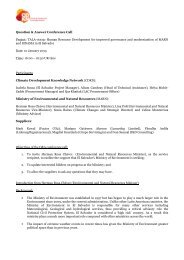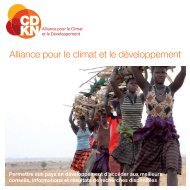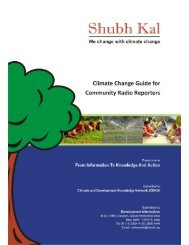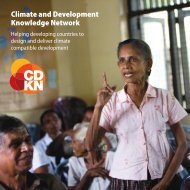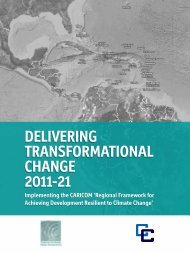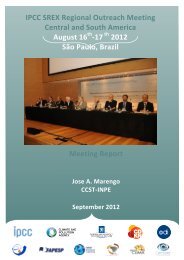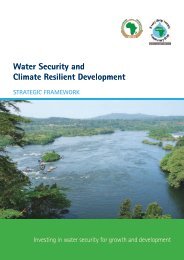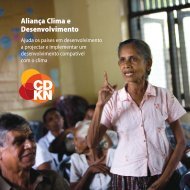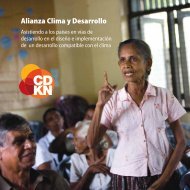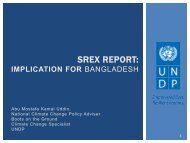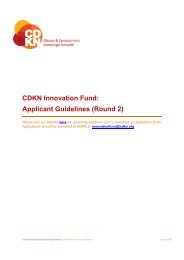DISASTER RISK REDUCTION 132+ +- Education Physical Development +Health Human Social Good LivingWork Development Political CommunityTrade Index Economical ManagementRecoverySOCIALResilienceVulnerabilityInteragencyProspectiveCoordinationXManagement At All Levels XRiskDisaster ManagementCorrectiveAcceptable RiskManagement Disaster Threat ECONOMICReconstructionRisk ManagementSubdevelopmentCivilInfrastructureProtectionEconomic Civil Defense Climate Change HousingGrowth- +- ANDSource: Authors.1. Risk 2. Conceptual andorganizational path3. Economic Growth 4. HumanDevelopment5. DRR1. Risk as a precondition of the disaster, consists of any threat, be it natural or anthropogenic, andpersonal, social, peoples and communities vulnerability. Depending on its emphasis, so it willbe the conceptual construction to be drawn up on disaster risk reduction DRR. There is no placeor condition without risk or zero risk or null risk. Risk is the chance, great or small, thatsomething may or may not happen and can become a disaster. The current concept of DRRplaced in the center of the approach Risk Reduction, and then sets an acceptable level of Risk,which is determined by each society and person. 2. Conceptual and organizational Path. As wehave explained, the previous concept disaster was placed in the center of the focus point, andfrom this perspective a series of activities and organization derived, such as disastermanagement, corrective, the risks and reconstruction, which maintained or deepenedunderdevelopment conditions and inequality of economic growth. The organization of civildefense was undertaken by the armed forces, and the subsequent civil protection, a civilmilitaryalliance with decentralized structure. The action focused towards threat, one of thecomponents of risk. 3. Economic growth focused on the construction of infrastructure, itentails urbanization and its associated potentializing threats effects. 4. The humandevelopment approach focuses on creating conditions for increasing and strengtheningeducation, health, work and participation of the population to better cope with social andpolitical situation. Here we talk about terms such as recovery of livelihoods and infrastructure.This improves the position of national human development index, in accordance with theMillennium Development Goals. This situation should reduce social vulnerability and increasingsocial resilience of nations. 5. DRR includes prevention by reducing physical, social, political,economic vulnerability, and so on, increasing social resilience and of the peoples, across theorganization and interagency coordination at all levels and the management methodologyprospective. It aims to achieve sustainable development, community management and therealization of the Good Life.132See these and other concepts in Annex 1: Glossary, CEPREDENAC, UNISDR, PREDECAN y CARE.30
Causes and complementary consequencesPopulation and DRRThe growth of informal settlements and slums in the urban core fueled by international immigration orinternal migration from smaller urban settlements or from the countryside to the cities has led to theflowering of unstable living environments. These settlements are often located in ravines, steep slopes,in floodplains or near industrial plants or hazardous or dangerous transportation systems 133 . Most citiesin Central America are characterized by their low capacity to deliver public services in quantity andquality.In this decade, most of the world's population growth will occur in urban areas of Africa, Asia and LatinAmerica and the Caribbean and, in 2007, more than half the world's population will live in cities 134 .The causes of migration, both internal and international, are due to several reasons: 1. the economicstructure, social and cultural exclusion: Major inequalities in access to resources and export-orientedactivity based on natural resources with little transformation 2. Political conflicts, 3.The process ofurbanization and reduction of rural stimulated rurality; and 4. Risks and disasters.The negative impact of unplanned urbanization on the environment and the ecological balance ismanifested in 135 : 1. the density of land use, 2. deforestation; 3. loss of soil cover and 4. Pollution.The weak control on the implementation of Minimum Standards of Construction and Safety Buildingand Housing is an important factor in increasing vulnerability in urban areas 136 . In addition,deficiency of Drainage Systems and changes in Land Surface Area increases the accumulation of rainwater and the sudden threat of flash floods and landslides 137 .In 2005 in Central America 138 : 1. Areas for agriculture exports increased over 2000, replacingmostly forested areas, 2. Populated areas increased by 46%, and 3. Forests decreased byapproximately 10%.Climate Change and DRR"Managing risk reduction" and the so called "adaptation to climate change" should be seen, built,implemented and executed as key components of a new vision and definition of development, not as anattachment to an existing development, satisfactory but still there is room for improvement.Development must be redefined through a necessary and fundamental integration issues such as risk,gender, environment and equity. At the same time, it is imperative to realize that when operating onland degradation, territorial ordering, livelihoods and governance, as the <strong>Global</strong> Assessment Report onRisk Disaster Reduction 2009, we simultaneously progress in reducing risk and poverty, adaptation toclimate change and achieving the Millennium Development Goals 139 .Risk reduction management and adaptation to climate change should be seen as a transversal,transterritorial and integral management, within the framework of comprehensive development.Climate change is another expression that explains how global processes affect local processes. But alsowhen it occurs in a world characterized by new forms of development and integration, modernization,globalization, knowledge, we know, even though not exactly, that there will be severe changes in riskfactors associated with exposure and vulnerability that will be resolved only to the extent whereintervention is perceived and concretized under the integrated modalities. Sectorization, the bias andspecialization, although relevant, will sometimes have to be overcome with a more comprehensive and133 Disaster risk reduction. A challenge for development. A global report; UNDP, 2004; p. iii.134 Ibid. P. iv.135 Trejo, Rosa, Department of sustainable development, OAS, January 2009.136 Trejo, Rosa, ibid.137 Trejo, Rosa, ibid.138 Trejo, Rosa, ibid.139 Lavell, Alan, The Risk of Disasters Occurrence, climate change, the local level and management. Environmental Observatory,USAC, URL, FLACSO, March 2011, p. 4.31
- Page 3 and 4: Executive SummaryCentral America is
- Page 5 and 6: Central is located in the "Ring of
- Page 7 and 8: Study ContentAs an innovative theme
- Page 9 and 10: that coexist in the universe. This
- Page 11 and 12: Central America level, is the only
- Page 13 and 14: of Mesoamerica has been explained a
- Page 15 and 16: possesses effective cultural commun
- Page 17 and 18: Additionally, to succeed and achiev
- Page 19 and 20: eforestation, hydrological planning
- Page 21 and 22: General thematic introduction on Cl
- Page 23 and 24: Central American Governments should
- Page 25 and 26: projected 109 conditions, changes o
- Page 27 and 28: General introduction on the themati
- Page 29: participatory manner, to address di
- Page 33 and 34: Organizational and legal contextWhi
- Page 35 and 36: The three bodies within the SICA ar
- Page 37 and 38: Based on research of available info
- Page 39 and 40: SE-CONREDCivilProtectionSNETCCNISCO
- Page 41 and 42: Synergy model that displays the add
- Page 43 and 44: Added value of indigenous and local
- Page 45 and 46: They do not work in a separate mann
- Page 47 and 48: demand for agricultural raw materia
- Page 49 and 50: Amazon DIPECHO Project “Strengthe
- Page 51 and 52: Indigenous Knowledge on DisasterMit
- Page 53 and 54: The combination of indigenous andsc
- Page 55 and 56: Indigenous Skills and the mysticism
- Page 57 and 58: Weather forecast through indigenous
- Page 59 and 60: In various international convention
- Page 61 and 62: Recommended ReadingBennett, A., 200
- Page 63 and 64: ILO, 1993, Convenio sobre pueblos i
- Page 65 and 66: Local knowledgeIncludes people and
- Page 67 and 68: which are threatswith a certainprob
- Page 69 and 70: Appreciates and respects their orga
- Page 71 and 72: framework, without taking into acco
- Page 73 and 74: Currently Cacaopera ethnicity, alth
- Page 75 and 76: IDH 228 For 2007 is of 0.6999Politi
- Page 77 and 78: The Mayangnas are people who are de
- Page 79 and 80: Rights of detainees to receive info
- Page 81 and 82:
Heritage Protection Article 128The
- Page 83 and 84:
19/09/1996 Law no. 230 Amendments a
- Page 85 and 86:
Indigenous Population:IDH 241 In 20
- Page 87 and 88:
Honduras, each has a different orig
- Page 89 and 90:
MISQUITOS 248 :In 1996 there were 3
- Page 91:
Internationalconventions signed wit



